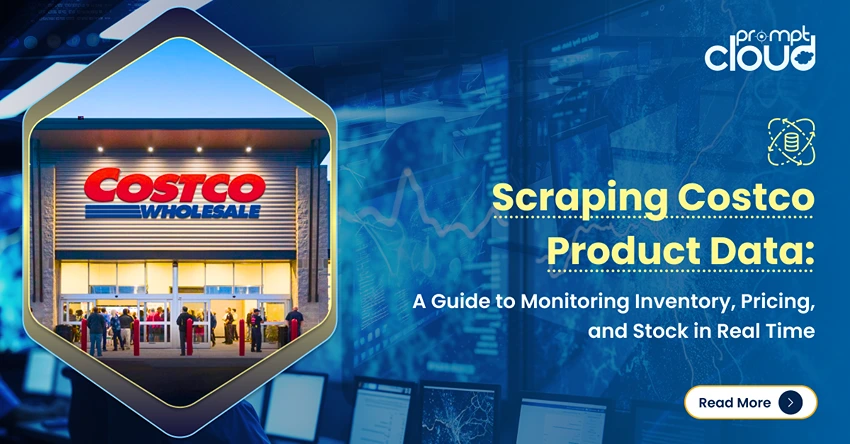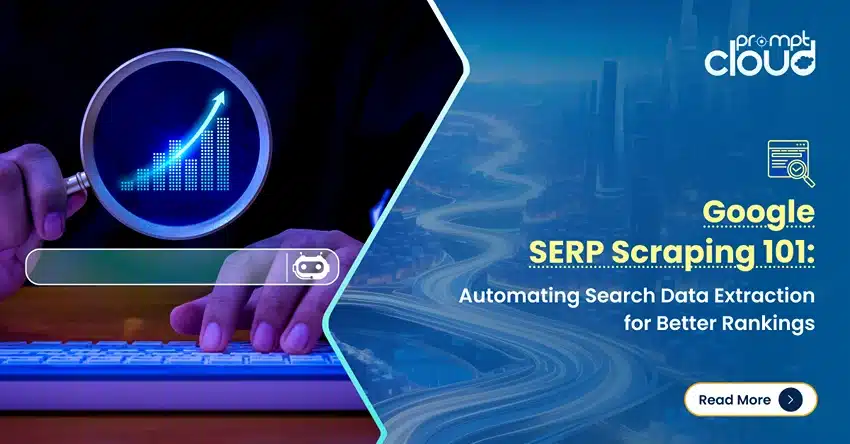
What is SERP Scraping and Why It’s Essential for SEO
Search engines have become the battleground for visibility. Every click, every impression, every scroll through a results page is a signal, one that smart SEO professionals and marketers are tracking closely. But here’s the problem: trying to manually check rankings, track keyword performance, or monitor competitors isn’t just tedious, it’s impossible to scale.
That’s where SERP scraping comes in.
SERP scraping is the process of pulling real-time data from Google’s search engine results pages, data that tells you which sites are ranking, what featured snippets are showing, who’s running ads, and what kind of content is dominating your niche. Done right, it’s like having a live feed of what’s happening in the search landscape.
And the value of that data? Huge.
According to BrightEdge, over 68% of online experiences begin with a search engine, and nearly 53% of all website traffic comes from organic search. Knowing exactly how your content performs on Google isn’t optional anymore; it’s how you stay competitive.
Whether you’re tracking your own rankings or reverse-engineering what’s working for competitors, scraping the Google SERP gives you the insights you need to make smarter, faster, and more informed decisions.
In this guide, we’ll break down how Google SERP scraping works, why automation is key, which tools and APIs can help, and how to do it ethically, all while showing you how solutions like PromptCloud make the entire process scalable and headache-free.
How Google SERP Scraping Works: What You Can Extract and Why It Matters
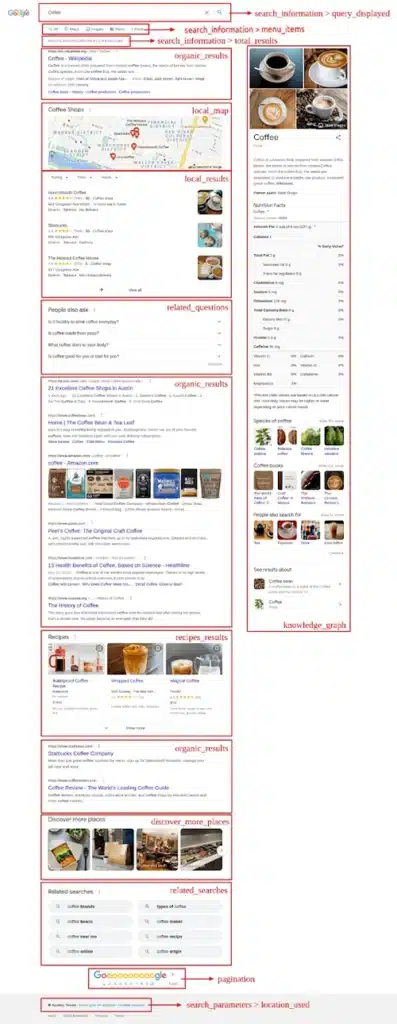
Image Source: SERP API
At its core, Google SERP scraping is about collecting data that shows what users see when they search for something on Google. But it’s not just about pulling URLs. SERP data is rich with insights if you know what to look for.
When you scrape the Google SERP, here are the key elements you’re usually extracting:
1. Organic Search Results
These are the regular listings, the ones you work hard to rank for with your SEO strategy. You can track your own positions for important keywords, see how competitors are doing, and identify new content opportunities based on what’s performing well.
2. Featured Snippets
If you’ve ever seen a direct answer at the top of a search result like a definition, list, or short paragraph that’s a featured snippet. Scraping these can show you which pages Google sees as authoritative and how they structure their content.
3. People Also Ask (PAA) Boxes
These are the expandable questions that appear mid-page. They’re gold for keyword research and content planning. Pulling this data helps you understand related queries and what types of answers users are looking for.
4. Paid Ads (Google Ads)
Ads at the top and bottom of the SERP give insight into which keywords competitors are paying for. SERP scraping can help you track who’s bidding on what, how frequently they appear, and what their ad copy looks like.
5. Local Packs and Map Listings
For businesses with a local focus, scraping local results like Google Maps listings is crucial. These results vary based on location, so automated scraping with geotargeting helps track visibility in specific regions.
6. Image Packs, Video Carousels, News Results, and More
Google’s SERP isn’t just text anymore. Depending on the query, you’ll see a mix of videos, images, news articles, and other media. These elements can be scraped, too, helping you understand what types of content formats are being prioritized.
Scraping the SERP at scale gives you a living snapshot of the competitive landscape. And because search results change constantly, sometimes hour by hour, scraping isn’t something you do once. It’s something you automate.
Which brings us to the next big point: Why automation matters.
Manual vs. Automated SERP Scraping: Why Automation Is Non-Negotiable
If you’ve ever tried checking keyword rankings by hand, you already know how painful that gets. It might seem manageable when you’re only tracking a handful of terms. But the moment your keyword list starts growing or you want to monitor multiple locations, devices, or competitors, things fall apart fast.
Manual tracking is messy. It’s slow, it’s inconsistent, and it’s full of noise. Google shows different results depending on where you are, what device you’re using, and even your search history. So unless you’re using a clean, consistent setup for every search, you’re not getting reliable data. And let’s be honest, no one has time to sit around Googling 100 different phrases every day.
This is where automation steps in and does what humans simply can’t.
With automated SERP scraping, you can run thousands of searches without lifting a finger. You can set schedules, track changes over time, and pull clean data into your SEO dashboards or tools. Whether you want to know where your blog ranks in New York vs. London or how often a competitor wins the featured snippet, scraping makes it happen fast and consistently.
And there’s another benefit. When you automate, you get to spend your time on strategy instead of grunt work. You’re not guessing which keywords dropped or which pages lost ground. You’ve got the data in front of you, and you can move quickly.
Bottom line: manual scraping doesn’t scale, and SEO is all about scale. If you’re serious about staying competitive, automated web scraping isn’t optional. It’s the foundation.
Now let’s talk about the tools that actually make this happen and how to choose the right one for the job.
Using Google SERP APIs and Web Scraping Tools: What Works and Why
Once you know you need to automate, the next question is how. There are two main routes here: using a Google SERP API or building something with your own web scraping tools. Both can get the job done, but the right fit depends on how deep you want to go, how much control you need, and how technical your team is.
Let’s break it down.
Google SERP APIs
A Google SERP API is a ready-to-use service that pulls search data for you. You send it a keyword, maybe a location or device type, and it gives you back structured results, clean and fast. No parsing HTML. No worrying about proxies, headless browsers, or Google’s anti-bot systems.
These APIs are built for scale. You can hit them with thousands of queries and get back data that’s easy to drop into your dashboards, reports, or SEO tools. For most marketers and SEO teams, this is the easiest way to plug SERP data into your workflow.
But here’s the catch: you’re limited by what the API gives you access to. If you want highly customized data, like parsing JavaScript-rendered content or tracking unusual SERP features, you might run into some roadblocks.
Web Scraping Tools and Custom Scrapers
If you need full control over what you’re scraping and how you structure the output, building your own scraper (or using a flexible tool like Puppeteer, Playwright, or Scrapy) gives you more freedom.
You can scrape exactly what you want, featured snippets, “People Also Ask” boxes, local pack data, even pixel-by-pixel layouts if needed. But this route takes more setup. You have to manage user agents, rotate proxies, handle CAPTCHAs, and keep up with changes in the way Google serves its pages.
In other words, more power, more responsibility.
This is where a managed solution like PromptCloud comes in. Instead of spending time building infrastructure, you get a scraping engine that’s already built to handle all those challenges, proxy rotation, CAPTCHA solving, geo-targeting, even delivering the data in whatever format you want. If your team wants custom data without getting buried in technical headaches, this kind of solution hits the sweet spot.
The takeaway? If you want plug-and-play access, go with a SERP API. If you want full flexibility, scraping tools are the way to go. And if you want the power of scraping without doing all the heavy lifting, PromptCloud can handle it for you.
Of course, even with the right tools, scraping Google SERPs doesn’t come without friction. Let’s talk about what gets in the way and how to get around it.
Key Challenges in SERP Scraping and How to Get Around Them
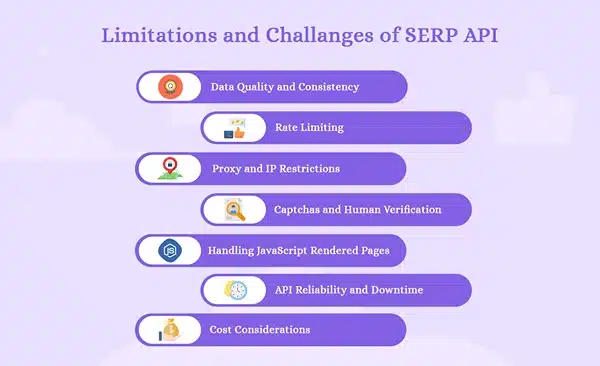
Image Source: Serphouse
Scraping the Google SERP sounds straightforward on paper: send a request, get the data, move on. But anyone who’s tried it knows Google doesn’t exactly roll out the red carpet for bots. In fact, they make it pretty tough. And for good reason, they want to protect the user experience and stop abuse.
But if you’re scraping responsibly and for legitimate SEO insights, there are ways to work around the roadblocks without crossing any lines. Here are the most common challenges and how to deal with them.
1. CAPTCHA Walls
One of the first things you’ll run into is the dreaded CAPTCHA. Google throws this up when it suspects bot activity. It’s designed to block automated access, and it’s pretty effective.
To get around it, you’ll need to use CAPTCHA-solving services or, better yet, avoid triggering it in the first place. That means spreading out your requests, rotating user agents, and mimicking human behavior. Headless browsers like Puppeteer can help with that, but if you’re not into managing it all manually, services like PromptCloud handle CAPTCHA detection and solving automatically.
2. IP Blocking and Rate Limits
If you hit Google too hard from a single IP address, you’ll get blocked fast. Google’s systems are built to spot unusual traffic patterns, and they don’t mess around.
To avoid that, proxy rotation is key. You need a pool of clean, residential IPs that rotate with every request. That way, you don’t raise red flags. Some scrapers even adjust request timing to stay under the radar. Again, this is something you can build yourself, but it’s way easier to use a managed service that already has the infrastructure in place.
3. Constant SERP Changes
Google is always tweaking the layout of its search results. One day a featured snippet is at the top, the next day it’s gone. Sometimes they test new formats or move things around. If your scraper isn’t built to adapt, it’ll break.
This is why maintenance is such a big part of scraping. You need to regularly update your scripts to match Google’s changes. Or, and this is where most teams breathe a sigh of relief, you can offload this work to a provider like PromptCloud, which constantly monitors and adjusts for changes so you don’t have to.
4. Legal and Ethical Considerations
This is the part that often gets ignored, but shouldn’t. Scraping public data isn’t illegal in most cases, but that doesn’t mean you should be reckless. You want to scrape responsibly, respect robots.txt when necessary, and make sure you’re not hammering servers or collecting personal data.
Using a provider that follows ethical scraping standards can help here. PromptCloud, for example, operates with clear boundaries and ensures compliance with local laws and guidelines so your data collection stays clean and defensible.
In short, scraping Google isn’t plug-and-play. There are real roadblocks. But with the right setup or the right partner, those obstacles are manageable. And once you’re past them, you’re sitting on a treasure trove of SEO intelligence.
Next, let’s look at how to actually use all that data in a way that improves your rankings and strengthens your strategy.
How SERP Data Drives Smarter SEO: From Keyword Tracking to Competitor Insights
Scraping the Google SERP isn’t just about collecting data for the sake of it. The real value comes from what you do with that data. If you’re serious about improving rankings, growing organic traffic, and staying ahead of competitors, you need clear, accurate search data, and that’s exactly what SERP scraping gives you.
Here’s how that data turns into real SEO wins.
Keyword Tracking That Actually Reflects Reality
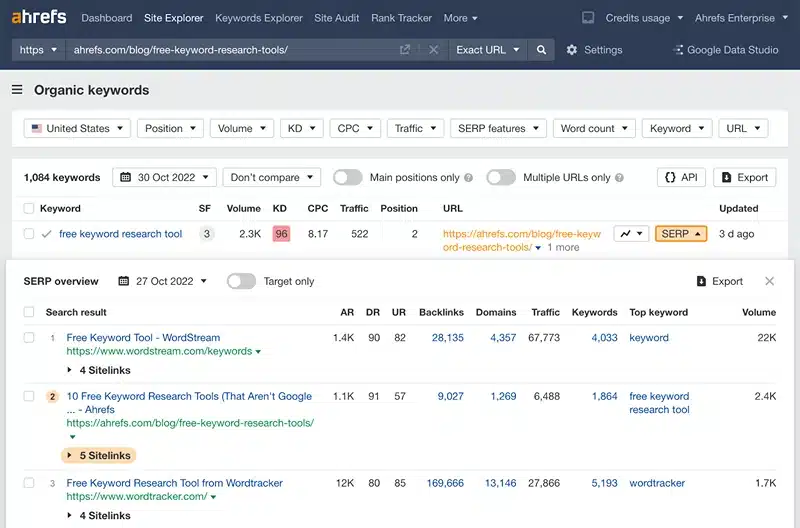
Image Source: AHREFS
Most rank tracking tools rely on cached or delayed data. That might be fine for a general trend, but if you’re launching a campaign, publishing new content, or trying to respond to a drop in traffic, you need real-time insights. With SERP scraping, you control the timing, the location, and the query. That means you get exactly what your users are seeing, no lag, no guesswork.
You can monitor how rankings change daily, watch how competitors climb or fall, and react fast when something shifts. It’s not about just knowing where you rank, it’s about knowing why and what to do next.
Competitive Benchmarking That Goes Beyond Surface-Level
It’s one thing to know who’s ranking above you. It’s another to understand why. SERP scraping lets you look under the hood of your competitors’ strategies.
You can see which pages are driving their visibility, what kind of titles and meta descriptions they’re using, how often they show up in featured snippets, and even what kind of schema they’re running. Are they winning “People Also Ask” boxes? Are they running Google Ads on top of ranking organically? Scraping gives you that full picture, so you’re not just following them blindly; you’re learning what’s actually working.
Smarter Content Planning Based on Real-Time Demand
Google’s search results show you what it thinks is the best answer to a question, and that’s incredibly valuable. By analyzing the top-ranking pages for your target keywords, you can figure out what kind of content Google wants. Long-form or short? Listicles or how-tos? Are they image-heavy? Do they include video? SERP data shows you the patterns.
Even better, scraping “People Also Ask” boxes and related searches helps you uncover secondary topics, sub-questions, and supporting keywords that should be baked into your content. This kind of insight takes your content strategy from gut feeling to data-driven.
Tracking Algorithm Updates and SERP Volatility
When Google rolls out an update, whether announced or not, rankings shift. But the only way to spot that quickly is by watching the SERP. If your site suddenly drops, scraping helps you see if it’s just you or if competitors took a hit too. You can also track how SERP features (like snippets, carousels, or local packs) appear more or less often over time.
This kind of visibility is how advanced SEO teams avoid being blindsided. They can connect the dots between traffic drops and SERP changes and adjust faster than the competition.
Feeding Data Into Broader Marketing and Analytics
Finally, all this scraped data isn’t just useful for SEO. It ties into PPC, product planning, content calendars, and even branding. Knowing what search terms trigger ads, which competitors dominate certain verticals, or how seasonal trends affect visibility helps you plan smarter across the board.
And when you integrate this data into your BI tools, CRMs, or internal dashboards, you’re not just reacting to SEO, you’re using it to guide business decisions.
So yeah, scraping the SERP gives you rankings. But more importantly, it gives you clarity. And clarity leads to better strategy, faster action, and stronger results.
Scrape Smart, Stay Compliant, and Win in the SERP
If there’s one thing that’s clear, it’s this: you can’t win in search without understanding the search results. And the best way to understand them at scale is through SERP scraping.
Whether you’re tracking your keyword performance, analyzing competitor strategies, or planning smarter content, scraping the Google SERP gives you the raw data you need to make better decisions. It takes the guesswork out of SEO and replaces it with real insights. And when you automate the process, that data becomes a live feed of your search landscape, always up to date, always in your control.
But scraping isn’t just about grabbing data and running with it. You need to do it right. That means respecting best practices, handling challenges like CAPTCHAs and IP blocks, and staying compliant with legal guidelines. Tools can help. APIs can help. But for most teams, especially those scaling up, having a scraping solution that handles the heavy lifting is a game-changer.
That’s where PromptCloud fits in.
PromptCloud offers fully managed web scraping services that are built for scale, accuracy, and compliance. From proxy management and geo-targeting to handling SERP changes and delivering structured data, PromptCloud takes care of the backend, so you can focus on what the data actually tells you. No technical overhead. No maintenance. Just clean, reliable SERP data, delivered how and when you need it.
If you’re ready to stop flying blind and start making search strategy decisions backed by real-time data, it’s time to bring SERP scraping into your workflow and do it the smart way.
Reach out to us and let’s talk about what you need. We’ll handle the scraping. You handle the results.














